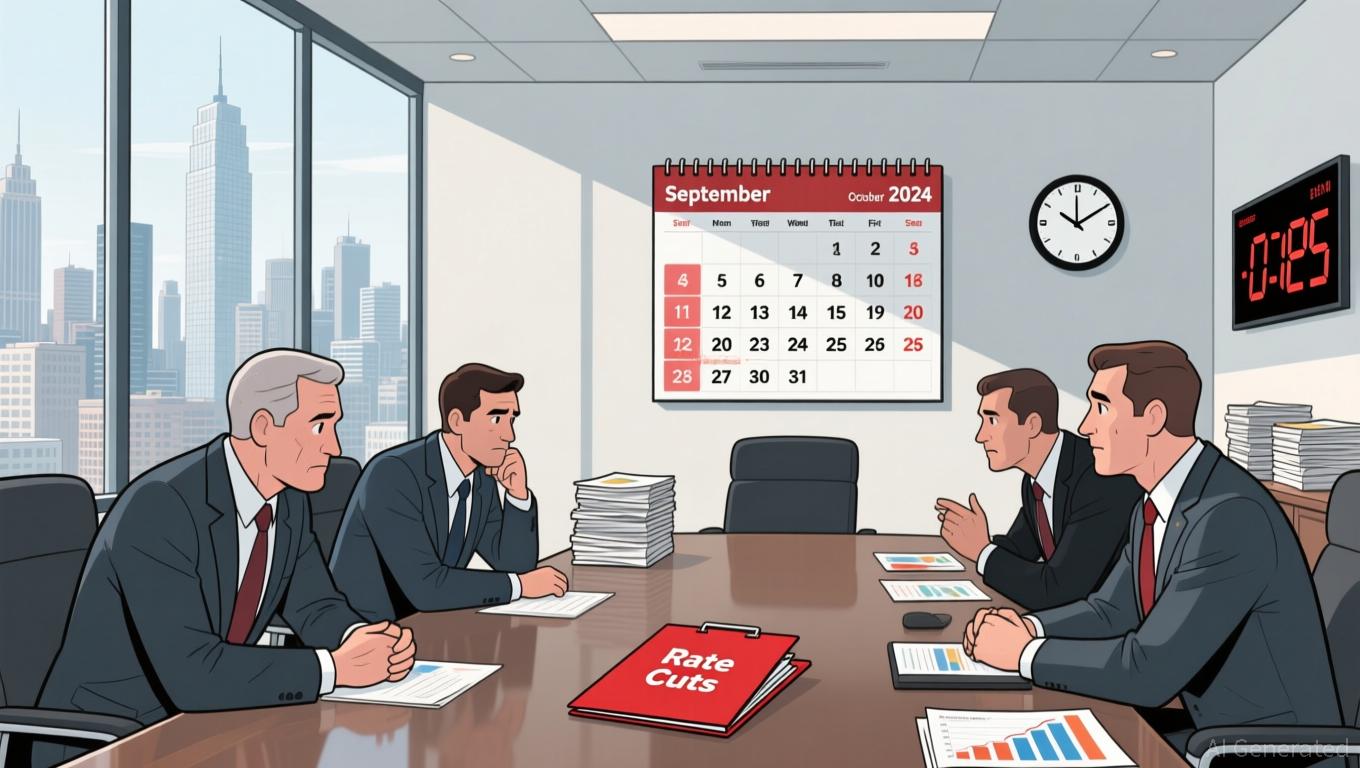Fed's Balancing Act: Navigating Inflation and Employment in the 2025 Interest Rate Challenge
- The Fed debates 2025 rate cuts to balance 3% inflation control with a cooling labor market, as policymakers like Jefferson advocate a slow easing approach. - Mixed signals persist: U.S.-China trade deal eased volatility but left businesses cautious, while Matson's 12.8% China service decline highlights lingering tensions. - Market expects 25-basis-point December cut, but Powell warns uncertainty remains, compounded by government shutdown limiting key data access. - Rate-cut expectations boosted municipal
The Federal Reserve is under increasing scrutiny as it tries to juggle its responsibility to curb inflation with the need to protect a job market that is beginning to show signs of weakness. With forecasts suggesting the U.S. economy could expand by 4% annually in 2025, officials are discussing how quickly to lower interest rates following cuts made in September and October, according to Jefferson. He advocated for a
The Fed’s careful approach comes as economic signals remain mixed. Inflation has steadied around 3%, but uncertainty in trade continues following the U.S.-China trade agreement reached at the end of October. This deal, which temporarily suspends port entry fees for a year and lowers tariffs on Chinese goods, has reduced some market volatility but left companies wary about managing their inventories, as shown in the

There is no consensus among market watchers about the Fed’s next steps. Some investors are anticipating a possible 25-basis-point cut at the December meeting, but Chair Jerome Powell has cautioned that this outcome is "not guaranteed." The ongoing federal government shutdown has made the Fed’s data-driven strategy more difficult, as it restricts access to crucial reports like October’s payroll numbers. Jefferson admitted this creates challenges, but said that data from private sources and state governments are still adequate for policy decisions.
The Fed’s policy discussions are also influenced by broader economic developments. Thornburg Municipal Bond Funds observed that expectations for lower rates have led to a 300-basis-point rally in the Bloomberg Municipal Bond Index, with yields on 10-year AAA municipal bonds dropping to 2.60% as investors look for tax-free returns, as detailed in its
However, some critics warn that the Fed’s decision to pause could slow economic growth. Musalem’s remarks about providing "insurance" for the labor market contrast with worries about a shrinking job market, as highlighted in the September Consumer Confidence survey. Thornburg’s third-quarter commentary noted that, despite softer labor data, both consumer spending and business investment remain robust.
As the Fed works through these challenges, its choices will likely influence both corporate strategies and investor sentiment. For example, Matson’s third-quarter results demonstrate how clearer trade policies can help businesses plan, while Thornburg’s bond fund performance shows how rate expectations can quickly affect markets. In the months ahead, the Fed’s ability to manage inflation while supporting economic growth will be a key factor shaping the direction of the U.S. economy.
Disclaimer: The content of this article solely reflects the author's opinion and does not represent the platform in any capacity. This article is not intended to serve as a reference for making investment decisions.
You may also like
Zuckerberg: *The Social Network* Captured My Mannerisms, But Not My Life
- Mark Zuckerberg praised *The Social Network* for accurately replicating his Harvard-era casual style, including owned T-shirts and fleece jackets. - He criticized the film's narrative, calling its portrayal of his Facebook motivations and fabricated romantic subplot "completely wrong." - Zuckerberg highlighted Hollywood's struggle to grasp tech entrepreneurship's intrinsic appeal, emphasizing real-world innovation vs. dramatization. - Despite narrative disagreements, he bought the film's iconic "Ardsley

Zcash Halving Scheduled for November 2025: Triggering Market Fluctuations and Attracting Speculative Investments
- Zcash's November 2025 halving will cut miner rewards by 50%, mirroring Bitcoin's deflationary model and tightening supply. - Historical data shows post-halving price surges, with Zcash's price rising 472% since October 2025 amid $137M institutional inflows. - Privacy-centric features (30% shielded supply) and speculative demand drive volatility, but regulatory risks and competition pose challenges. - Market dynamics highlight tension between scarcity-driven optimism and macroeconomic uncertainties affect

Solana News Update: Solana ETFs See $15 Million in Investments Despite Token Price Decline
- Solana ETFs gained $14.9M on Nov 4, contrasting Bitcoin and Ethereum ETF outflows. - Institutional demand driven by Solana's 7-8% staking yields and tokenized asset infrastructure. - SOL price remains bearish, trading below 9-day SMA at $186.92 despite inflows. - Upexi's 2.1M staked SOL holdings signal long-term confidence in Solana's value.
Bitcoin Updates: Crypto Market Divides as Pessimism Clashes with Institutional Confidence in Ethereum
- US stocks closed mixed on Nov 7, 2025, as Bitcoin fell below $100,000 amid $711.8M in crypto liquidations. - ARK Invest boosted Ethereum exposure by buying $9M of BitMine shares, signaling institutional confidence in ETH treasuries. - UK aligns stablecoin rules with US by Nov 10, while crypto firms form consortium to standardize cross-border payments. - Coinbase and Block underperformed revenue forecasts, with Block down 9% despite $6.11B revenue. - Market remains divided between Bitcoin bearishness and